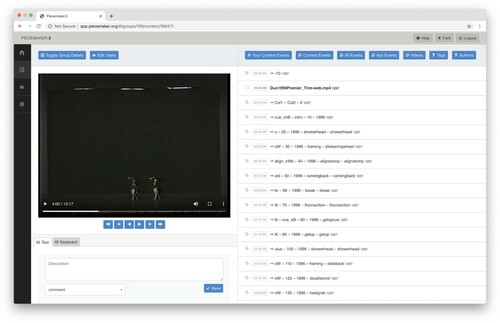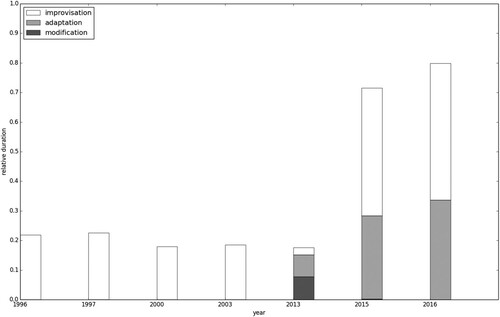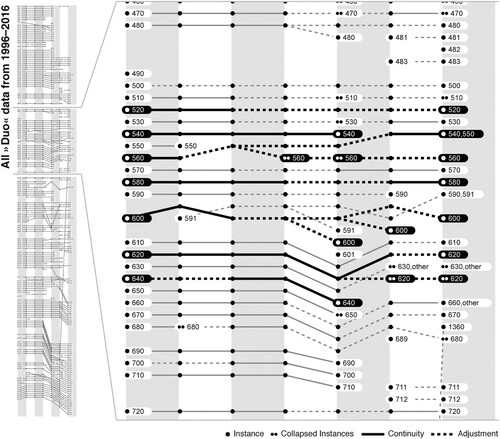Figures & data
Figure 1. The Duo Project by William Forsythe. (left) Duo with dancers Allison Brown and Jill Johnson in 2003 © Jack Vartoogian/FrontRowPhotos. (right) DUO2015 with dancers Riley Watts and Brigel Gjoka © Bill Cooper.
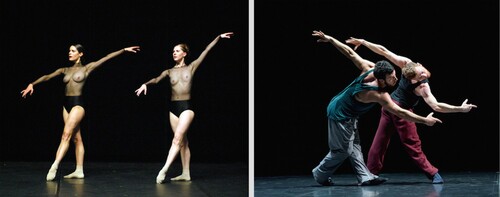
Table 1. Key performances of Duo.
Table 2. Annotation categories: Duo research in comparison to Synchronous Objects.
Figure 2. Screenshot showing annotation data for the 1996 key performance in Microsoft Excel. Columns A and B record the duration markings of the video; column C the category of entrainment; column D the transitions; Column E sectional markings; Column F the movement material identifier; Columns G and H reiterate informal names for the movement material of the left and right dancers respectfully, drawn from Waterhouse and the dancers’ lingo.
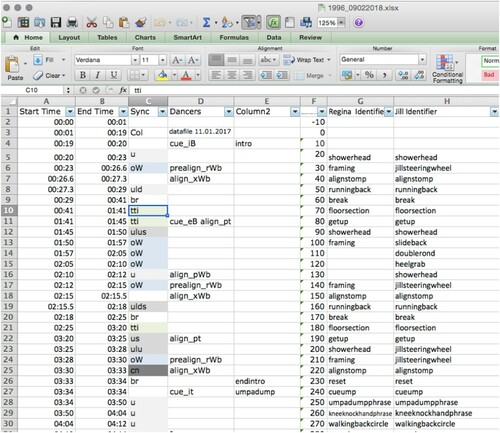
Figure 3. Isadora visualizer showing the 1997 key performance, timecode and annotation of ‘c’ for concurrent motion.
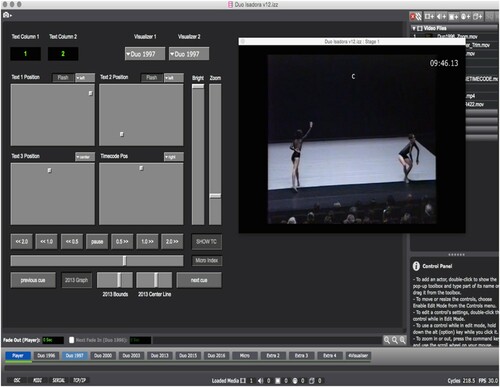
Table 3. Sequence Changes to a Hypothetical Sequence of Building Blocks ABCDE.
Table 4. Duration of key performances (seconds).
Table 5. Modes of Entrainment (%) of Duo key performances.
Table 6. Count of cues, Alignments and prompts of Duo key performances.

